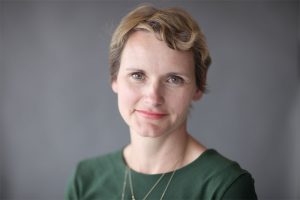All copros great and small
 Lilla Hurst, joint managing director, Drive
Lilla Hurst, joint managing director, Drive
UK production companies gap-financed projects to the tune of £230 million-260 million (US$360 million-US$407 million) last year, up from £185 million-215 million in 2013, according to Pact’s Independent Production Sector Financial Census 2015.
Why is this happening?
Part of the problem is all too familiar: commissioning fees are on the decline, while costs of production go up. A gap that was once comfortably covered by a modest distribution advance is now a rare thing and more frequently producers are opting to take the risk of going into production with a deficit in the hope that sales of the finished show will keep the wolf from the door.
However there is a growing trend, courtesy of the ‘Netflix effect’ that is also threatening the traditional coproduction model.
US-based channels that previously were open to coproductions with the UK are aggressively moving towards an all-rights model, where premium commissioning fees are paid for global rights.
This means that mid-range budgets that could previously have been financed by a UK/US coproduction are losing out as the America moves to an all-or-nothing scenario. The knock-on effect of this? Programme financing is being pulled in two separate directions – either an all-out global commission, or a low-cost prebuy.
At Drive we are now noticing the effect that this is having on budgets, where some projects are heading towards movie-cost territory and others are offering modest budgets in return for longer running, returnable formats.
The resulting challenge for indies wanting to produce programmes with international appeal is to develop ideas that either appeal at a global, premium level, or offer volume at a lower cost.
An additional side-effect of this is the influence the trend is having over quality. At the top level we are seeing hugely ambitious projects using A-list directors and talent (and all the CGI you can throw at it), while at the other extreme we see the most simple ‘through the round window’ TV that employs archive, voice over and simple graphics.
This means that we find ourselves pitching more frequently to US channels, but negotiating with them for a global rights package for high-budget shows, and pulling together three or more international partners for the cost effective, long-running shows.
While the type of projects we are currently working on have changed in terms of budget and subject matter, the requirement for coproduction expertise in piecing together multiple partner deals is by no means diminishing; if anything we are seeing more partners on certain projects.
At this point it’s hard to say how long this current trend will last, and another unknown is how channels that are spending all their budgets on commissioning ‘premium’ content are going to fill the rest of their schedules, while maintaining core brand appeal across the schedule. If you are not an SVOD channel can you really get away with this model?



